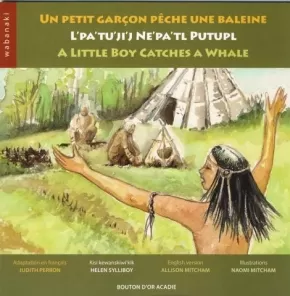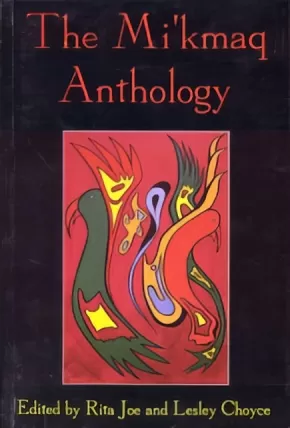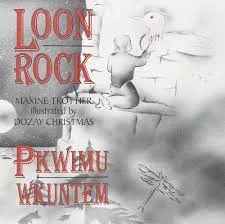
Mi'kmaq (Mi'gmaq)
76
-
79
of
79 Results;
Sort By
Go To
of 6
A Little Boy Catches a Whale
$7.95
Format:
Paperback
Text Content Territories:
Indigenous Canadian; First Nations; Mi'kmaq;
Grade Levels: 3;
ISBN / Barcode: 9782922203493
Synopsis:
Synopsis:
One late fall day, the boy told the old people that he was going fishing. When he returned home, he said that he had caught a whale.
Un matin, juste avant l’arrivée de l’hiver, le garçon dit à ses parents qu’il part à la pêche. Peu de temps après, il revient chez lui, tout heureux d’annoncer qu’il a pêché une baleine.
Educator & Series Information
This book is delivered in a triple-language format of English, French, and Mi'kmaq.
This book is part of Collection Wabanaki.
How the Petitcodiac River Became Muddy
$9.95
Artists:
Format:
Paperback
Text Content Territories:
Indigenous Canadian; First Nations; Mi'kmaq;
ISBN / Barcode: 9782922203813
Synopsis:
Synopsis:
How the Petitcodiac River Became Muddy is a trilingual picture book that retells a Mi'kmaq legend.
This simple story details the Mi'kmaq explanation for an eclipse, why the lobster turns red when it is put in boiling water, and how the Petitcodiac River became muddy long ago. This legend draws on the original version by Michael Francis (1923-1995) of Elsipogtog, New Brunswick. Glooscap figures prominently in this remarkable story that is recommended for language programs.
Educator & Series Information
The French title is Comment la riviÞre Petitcodiac devint boueuse. The Mi'kmaq title is Ta'n Tel-kisi-siskuapua'qsepp Petikotiak Sipu. Allison Mitcham tells the English version. Serena Sock provides the Mi'kmaq translation, and Marguerite Maillet provides the French translation. The dynamic art illustrations are created by Raymond Martin.
This book is part of Collection Wabanaki.
Additional Information
22 pages | 8.00" x 8.00"
The Mi'kmaq Anthology
$21.95
Format:
Paperback
Text Content Territories:
Indigenous Canadian; First Nations; Mi'kmaq;
Reading Level: N/A
ISBN / Barcode: 9781895900040
Synopsis:
Synopsis:
A varied and spiritual collection of work by the Mi''kmaq writers of Atlantic Canada. Both young and old stories and storytellers combine talents to produce short stories, poetry, and personal essays.
Loon Rock: Pkwimu Wkuntem
$9.95
Artists:
Format:
Paperback
Text Content Territories:
Indigenous Canadian; First Nations; Mi'kmaq;
ISBN / Barcode: 9780920336847
Synopsis:
Synopsis:
The story of a loon and a young Mi'kmaq boy written in English and Mi'kmaq.
Additional Information
22 pages | 8.00" x 8.00" | Mi’kmaq translations by Helen Sylliboy
Authenticity Note
The author of this story is not Indigenous; however, the Mi'kmaq translator is. The illustrator is also Indigenous.
Sort By
Go To
of 6










